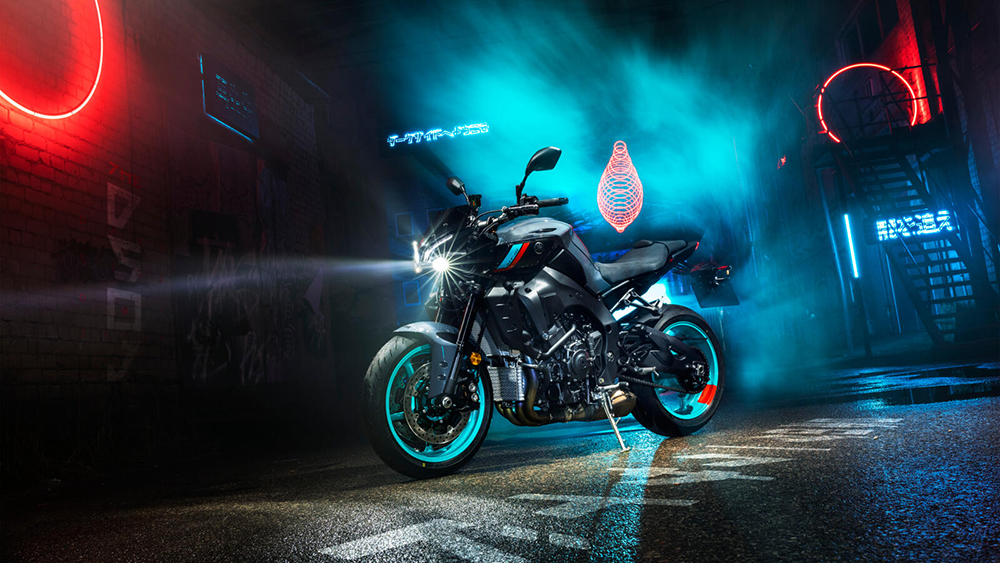Since its release in 2016, the Yamaha MT-10 has remained relatively unchanged, but Yamaha has now ripped the covers off its new 2022 MT-10 with a raft of updates and fresh new look, bringing it in line with the styling of the rest of the MT range while retaining a resemblance to the original MT-10.
https://www.youtube.com/watch?v=LQm2h9sgcAc
2022 Yamaha MT-10 Key Features
- More powerful EU5 998cc engine
- Tuned intake sound
- Titanium exhaust
- Compact and functional new exterior styling
- Improved ergonomics
- Brembo radial master cylinder
- Yamaha Variable Speed Limiter (YVSL)
- Quick Shift System (QSS)
- A&S clutch
- New 4.2” full-colour TFT display
- APSG ride-by-wire throttle with four power delivery modes (PWR)
- 6-axis IMU
- Lean sensitive Traction Control System
- Slide Control system (SCS)
- Lift control system (LIF)
- Engine Brake Management (EBM)
- Brake Control (BC)
- Yamaha Ride Control (YRC)
- R1-derived aluminium Deltabox chassis
- Long aluminium swingarm
- Compact 1,405mm wheelbase
- 43mm fully adjustable KYB front forks
- Fully adjustable KYB rear shock
- Bridgestone Battlax Hypersport S22 tyres

The next evolution of the MT-10 is equipped with a refined version of the liquid-cooled CP4 crossplane engine that is closely related to the YZF-R1. Developing increased power and producing a stronger feeling of torque, this is the most powerful and most technologically advanced engine ever seen on a Yamaha Hyper Naked motorcycle. The updated 2022 design benefits from lightweight aluminium forged pistons, offset con rods and direct-plated cylinders in order to ensure maximum efficiency, and has a number of new model-specific features that are designed to enhance the feeling of torque. To boost the road-focused midrange, steel conrods are used rather than the titanium components used on the R1, and the moment of inertia at the crankshaft is increased and a factory fitted bi-directional Quick Shift System (QSS) provides smooth, clutchless shifting through the six-speed gearbox.
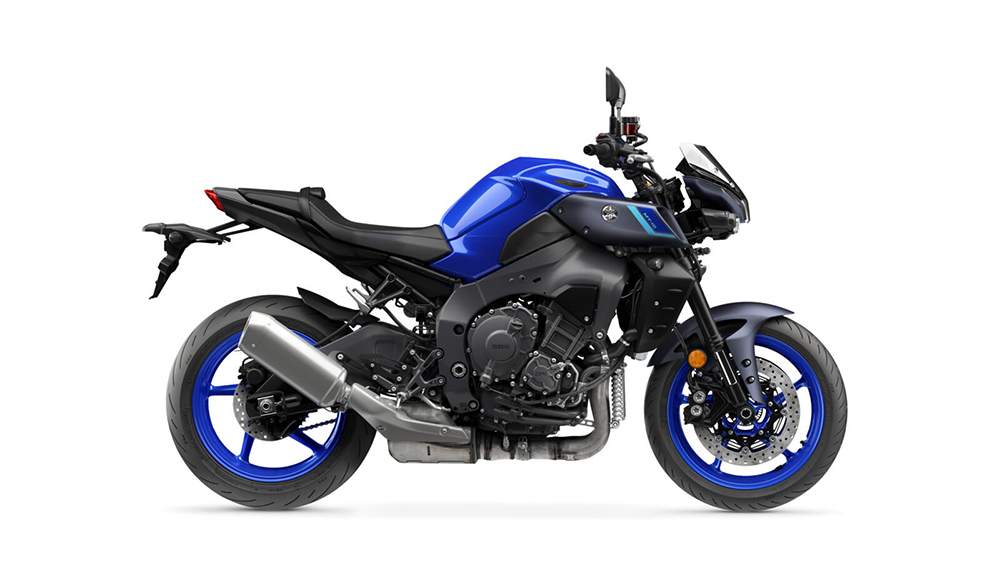
Fuel injection settings have been changed for an even higher level of linear torque between 4,000 and 8,000 rpm – and there’s a newly designed intake and exhaust system. Fuel economy is improved, CO2 levels reduced, and the new engine meets EU5 regulations.
A new titanium exhaust is used on the MT-10, and this lightweight system features newly designed titanium downpipes and muffler. Like the new tuned intake, the exhaust has been designed to emit a deep and distinctive sound that emphasizes the bike’s uneven firing sequence.

The 2022 MT-10 features aggressive new styling, with compact new twin-eye mono-focus LED headlights with separate high and low beam and LED position lights situated above the headlights. Enlarged tank mounted twin air intake ducts increase efficiency and contribute towards the increased power output of the 2022 engine. For improved comfort together with greater freedom of movement, the 2022 model’s ‘rider triangle’ – the bar/footrest/seat relationship – has been improved. The fuel tank cover is now smoother, giving a better feel when the rider grips the tank with their knees when braking or accelerating – and also allows greater mobility when shifting weight for corners. The seat firmness and shape has also been modified for greater comfort.

The MT-10’s front braking system features dual floating 320mm discs with 4 piston radial-mounted calipers – the same system as used on the R1. For 2022 a new Brembo radial brake master cylinder is featured, providing improved braking feel at the lever.
The next evolution of the MT-10 comes fully equipped with an R1 derived 4.2” full-colour TFT display that features a clear and easy to read screen with all of the key information on view. A menu switch on the right handlebar enables the rider to select which information is displayed, while the ‘Mode/Select’ switch on the left side of the handlebar can be used to change the intervention levels of the electronic rider aids, or where applicable, to turn them on or off.

The new ride by wire throttle works with the Yamaha Chip Controlled Throttle (YCC-T) to provide increased controllability when accelerating. This advanced system provides the optimum intake air volume to the combustion chamber, ensuring that the rider experiences smooth torque characteristics over the MT-10’s rev range. The rider can also adjust the throttle response characteristics using the PWR (Power delivery mode) switch. PWR-1 is suited to aggressive trackday riding; PWR-2 and PWR-3 deliver a smoother throttle response that enables the rider to experience the bike’s linear torque, and PWR-4 is a softer response that is best used when surface conditions are wet or slippery.
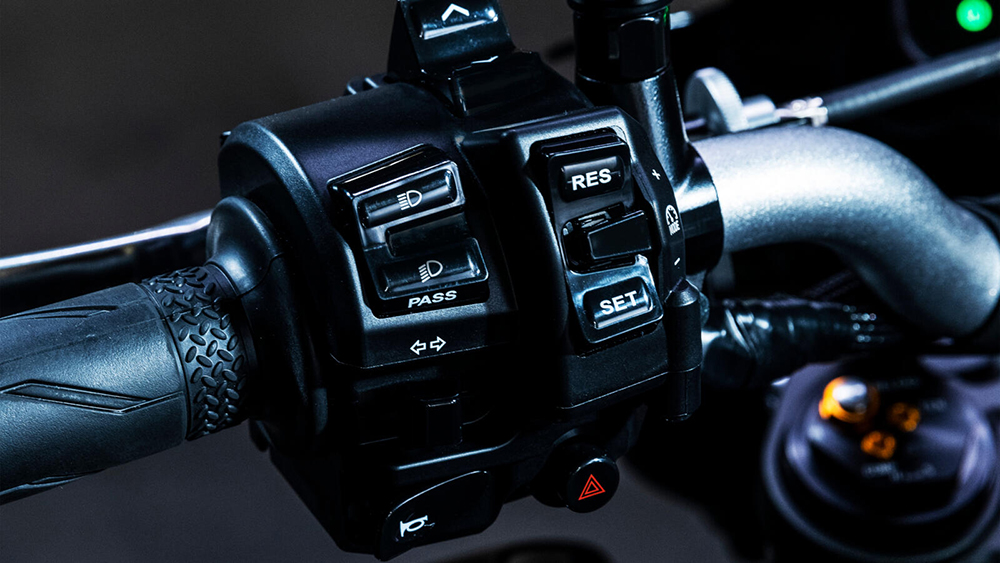
The new MT-10 is now equipped with a state of the art 6-axis IMU (Inertial Measurement Unit) that was originally developed for the R1 and has now evolved into a smaller and lighter unit.
The IMU features two sensors that measure 3-axis angular velocity: pitch, roll and yaw – and three-axis acceleration: forward/backward, up/down and left/right. This data is transmitted to the ECU which activates the bike’s electronic rider aids which give unprecedented levels of machine controllability by intervening to prevent wheel lock-ups, loss of traction or wheelies.

Using data from the 6-axis IMU, this new lean-sensitive traction control system is able to adjust the degree of intervention to correspond with the bike’s lean angle, with intervention increasing as lean angle increases.
A total of five intervention levels are available.

For increased cornering controllability and confidence, the MT-10 is equipped with the latest Slide Control System (SCS). When the sensors predict that the rear wheel is about to slide sideways, the ECU intervenes and reduces drive to the rear wheel until the chassis is stable. The system uses pre-set intervention levels, but the rider can adjust the levels or turn the system off. When sensor data tells the IMU that the front wheel lift is imminent the ECU cuts power to the rear wheel until the machine is stable again. As with some of the other rider aids, the intervention levels are pre-set, but the rider can adjust them or turn them off.

EBM controls the degree of engine braking force when decelerating, and gives the rider a choice of two levels. Level 1 gives a high level of engine braking, while Level 2 gives minimal engine braking, enabling the rider to choose the most suitable level for the prevailing riding conditions. Modes are pre-set, but can be adjusted by the rider or turned off.

Brake Control (BC) is designed to give increased controllability during mid-corner riding, and independently modulates and controls the pressure being applied to the front brake and rear brake.
The rider can select one of two modes: BC1 mode is a standard ABS-active mode, while BC2 is designed to operate in mid-corner emergency braking situations.
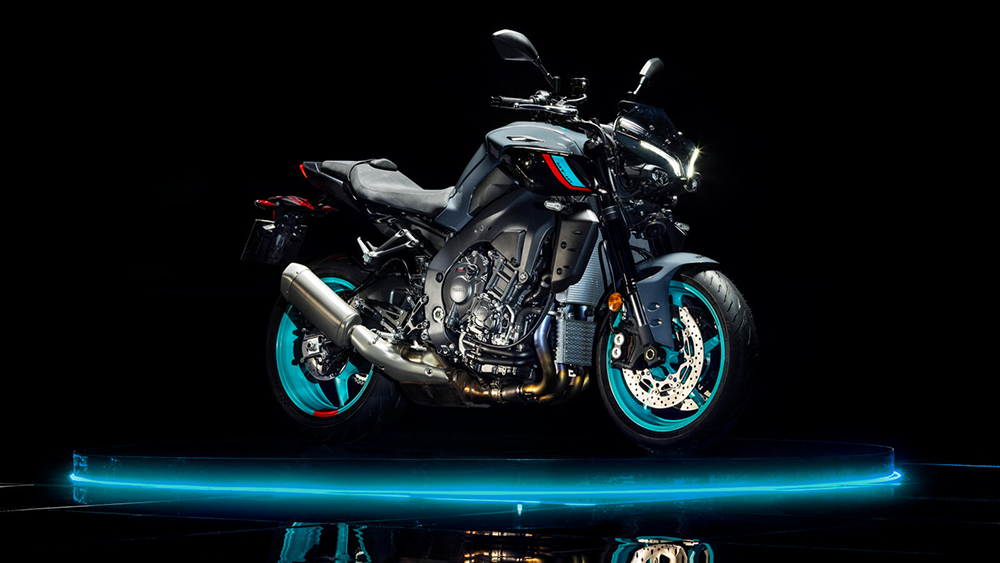
While all of the electronic rider aids can be adjusted independently, Yamaha Ride Control (YRC) gives the MT-10 owner the ability to create an all-inclusive system that can switch the settings for the traction control, SCS, QSS, LIF, EBM and BC systems all at
once. YRC is available in four different modes that are designed to suit a variety of riding conditions, Mode A is for sporty riding, Mode B is for a wide range of conditions, Mode C is tailored for urban usage and Mode D is for rainy or adverse conditions. The YRC’s four modes have pre-set values, but the MT-10 rider can choose to reset the various different mode settings to match their own preferences.
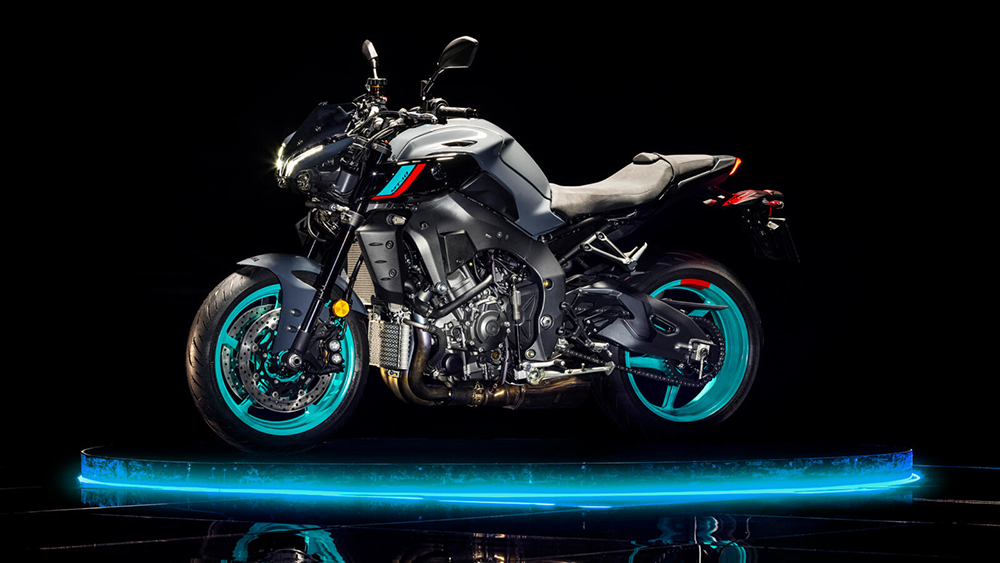
Derived from the class-leading R1, the aluminium Deltabox chassis is developed to handle 200 HP and uses the CP4 engine as a fully stressed member to keep weight to an absolute minimum.
Equipped with a long aluminium swingarm but with a compact wheelbase of 1405mm, the Deltabox chassis delivers stable, light and agile handling in a wide variety of low and high speed conditions.
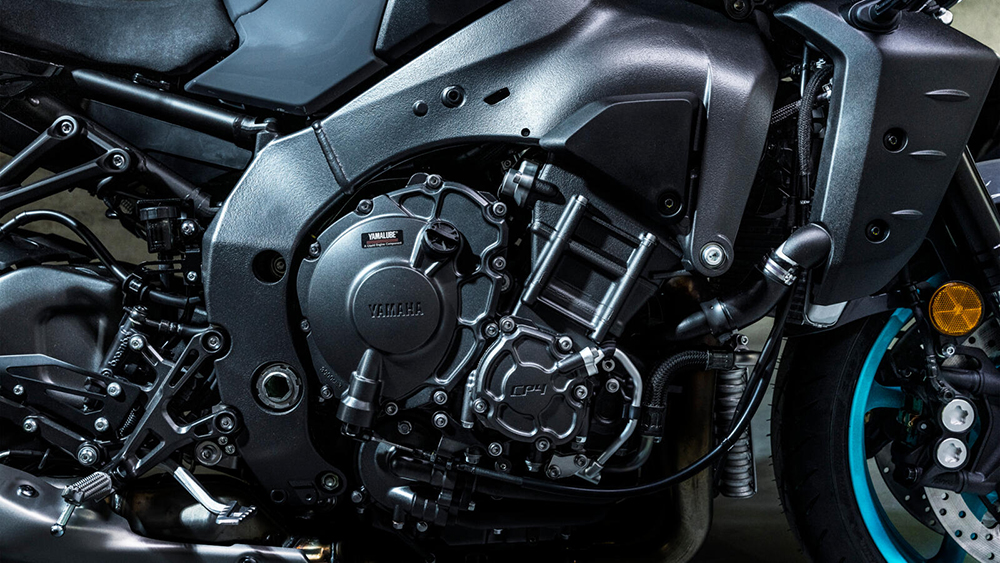
The MT-10 is equipped with 43mm fully adjustable KYB front forks that offer 120mm travel and can be set up to match personal riding preferences and the forks are complemented by a fully adjustable KYB rear shock that can be easily adjusted to handle varying loads and riding styles.

Yamaha Australia has yet to announce pricing or an ETA on the new MT-10
